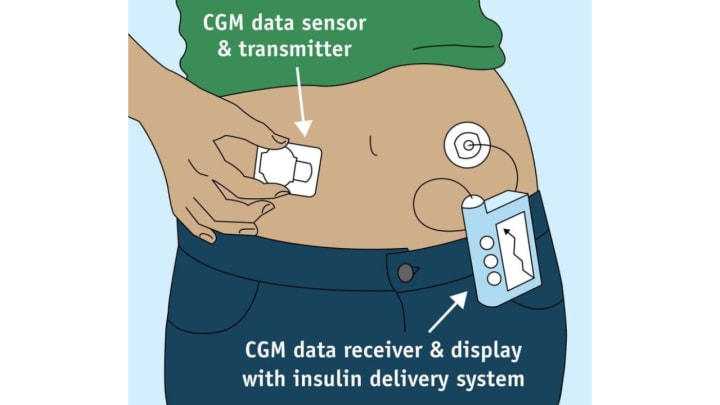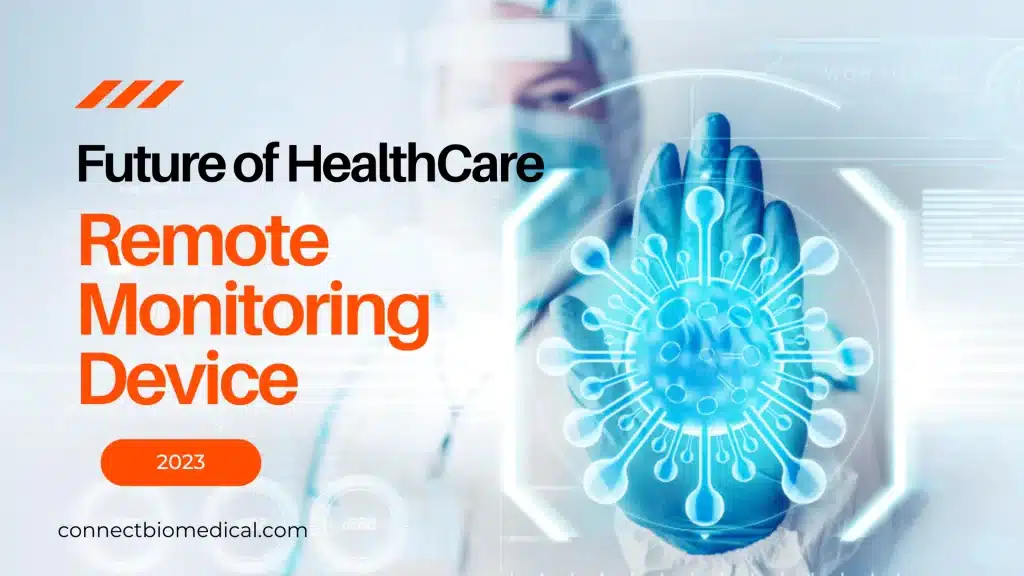CGM systems track blood sugar levels and provide real-time feedback to patients, reducing hypoglycemia and hyperglycemia.
Diabetes is a serious health condition that affects millions of people around the world. Managing diabetes can be difficult and stressful, as it requires constant monitoring and lifestyle changes.
Fortunately, advances in technology have opened up new possibilities for diabetes management. Continuous Glucose Monitoring (CGM) is an exciting new tool that has the potential to revolutionize how people manage their diabetes.
In this article, we will discuss how CGM works, its benefits and limitations, and what the future holds for this technology.
Table of Contents:
Introduction
Continuous Glucose Monitoring (CGM) is a revolutionary new tool that can help patients with diabetes better manage their condition. CGM systems provide real-time monitoring of blood glucose levels, which allows patients to make timely and informed decisions about their health.
This technology has the potential to greatly improve glycemic control and reduce the risk of hypoglycemia and hyperglycemia.
The basics of CGM are relatively simple: a small device is placed under the skin, usually in the abdomen, and measures glucose levels every few minutes throughout the day.
The device sends data to a smartphone or other device for tracking purposes.
It can help them make changes to their diet and lifestyle as needed to keep their glucose levels within a healthy range.
“It provides real-time data on glucose levels. CGM systems also offer other benefits, such as automatic alerts when levels get too high or low.“
CGM can be helpful for people who can’t detect hypoglycemia or hyperglycemia signs in themselves or who need support managing their diabetes.
How does CGM work?
Continuous Glucose Monitoring (CGM) allows individuals to monitor their blood sugar levels in real-time.

CGM systems are composed of a small sensor and transmitter which are inserted under the skin and measure glucose levels every few minutes. This information is then transmitted to an app or device, such as a watch or smartphone, where it can be accessed by the patient and others with permission.
“CGM systems are more accurate than the traditional method of finger prick tests. They also eliminate painful finger pricks.“
And it reduces the risk of hypoglycemia and hyperglycemia and improves the regulation of blood sugar over time.
CGM systems are more expensive than traditional diabetes management methods, but advances in technology have made them more affordable. Dexcom and Abbott Diabetes Care offer some of the most advanced models today. FreeStyle Libre Glucose Monitoring System is available on the market.
CGM technology will become even better; researchers are developing sensors that measure glucose from tears or sweat instead of interstitial fluid. Other companies are creating smart insulin pens that automatically adjust doses based on CGM data.
The potential advantages these technologies could bring about could revolutionize diabetes management for millions worldwide who grapple with controlling their condition each day.
Benefits of CGM
Continuous Glucose Monitoring (CGM) systems offer numerous benefits to patients with diabetes. Here are some of the key advantages of using a CGM system:
- Improved Glycemic Control: By providing real-time feedback on blood sugar levels.
- Several studies have shown that the cgm system is associated with improved glycemic control for type 1 diabetes patients.
- Reduced hypoglycemia and hyperglycemia risk
- Users can take appropriate action to adjust their diet, exercise, or insulin as needed.
- CGM systems provide valuable data on diet, activity, and glucose levels.
- Increased Patient Engagement and Motivation
- Seeing how making healthy choices affects their glucose levels helps motivate patients to keep trying.
- The quality of life for people living with diabetes is significantly improved by the convenience, accuracy, and portability offered by CGMs. These systems enable people to go about their daily lives while still monitoring their blood sugar levels in real time.
- CGM helps improve quality of life by allowing individuals greater freedom from having to constantly check blood sugar manually throughout the day.
- It’s also stress-free because users don’t have to worry about missing readings or misinterpreting data due to fatigue or stress.
Limitations and challenges
Continuous Glucose Monitoring (CGM) technology is still relatively new and presents certain limitations and challenges.
- The cost of CGM is high when compared to the traditional method of monitoring the glucose level of a patient.
- CGM systems require frequent calibration to provide accurate readings. it’s also a factor to make them costlier.
- It’s smaller in size and more comfortable to wear, but there may still be some discomfort that may occur while wearing it for a longer period.
- These devices need to be replaced usually for a variety of reasons, including battery life or wear and tear.
- CGM systems only provide real-time feedback on blood sugar levels within a certain range. They may not always be able to detect dangerous fluctuations in glucose levels that occur outside this range.
- CGM systems can improve glycemic control in the short term, but they haven’t proven effective long term.
Future directions
Continuous Glucose Monitoring (CGM) technology is continuing to evolve and new advancements are being made. As CGM technology becomes more accessible and affordable, its potential for revolutionizing diabetes management will become more apparent.
In the future, CGM systems could be integrated with other diabetes management devices such as insulin pumps and glucometers.
CGM allows for the seamless integration of glucose monitoring data into an individual’s diabetes plan, allowing for more accurate and effective diabetes management.
Research is underway to develop more accurate sensors that can measure glucose levels more consistently over time. It could help improve glycemic control and reduce the risk of complications related to hypoglycemia or hyperglycemia.
Research is going on to measure glucose levels without invasive methods, so CGM systems will be more comfortable and convenient for users.
Artificial intelligence (AI) could be applied to CGM data to detect patterns that may otherwise go unnoticed by human analysis alone.
AI algorithms could help healthcare providers when a patient’s blood sugar levels start moving quickly. It could prevent a problem.
AI could also enable predictive models which anticipate changes in blood sugar levels before they occur to better inform preventive care plans.
Overall, Continuous Glucose Monitoring is a game-changer in diabetes management and its potential for revolutionizing healthcare has yet to be fully realized.
With new advancements being made every day, it is clear that this technology holds great promise for improving outcomes for people living with diabetes.
Conclusion
Continuous Glucose Monitoring (CGM) systems have the potential to revolutionize diabetes management by providing real-time feedback on blood sugar levels. It can help improve glycemic control and reduce the risk of hypoglycemia and hyperglycemia, making it easier for patients to manage their condition.
CGM systems can make patients more engaged and motivated. They also help people with diabetes by providing access to data and a better quality of life.
There are some limitations to the technology, such as cost, wearability, and comfort. Accurate, long-term effectiveness is also being improved.
New solutions use CGM systems with other diabetes management devices, sensors that are more accurate, and artificial intelligence to improve CGM data.
These developments will hopefully lead to better outcomes for people living with diabetes in the future.
Overall, Continuous Glucose Monitoring helps patients manage their condition better. It’s important as rates of diabetes are rising worldwide.






